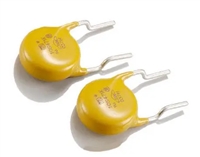| 是否无铅: | 含铅 | 是否Rohs认证: | 符合 |
| 生命周期: | Active | 零件包装代码: | SOIC |
| 包装说明: | HVSON, | 针数: | 6 |
| Reach Compliance Code: | compliant | ECCN代码: | EAR99 |
| HTS代码: | 8542.39.00.01 | 风险等级: | 1.65 |
| Is Samacsys: | N | 最大回动电压 1: | 0.15 V |
| JESD-30 代码: | S-PDSO-N6 | JESD-609代码: | e4 |
| 长度: | 2 mm | 湿度敏感等级: | 1 |
| 功能数量: | 1 | 端子数量: | 6 |
| 工作温度TJ-Max: | 125 °C | 工作温度TJ-Min: | -40 °C |
| 最大输出电流 1: | 0.3 A | 最大输出电压 1: | 5 V |
| 最小输出电压 1: | 0.8 V | 封装主体材料: | PLASTIC/EPOXY |
| 封装代码: | HVSON | 封装形状: | SQUARE |
| 封装形式: | SMALL OUTLINE, HEAT SINK/SLUG, VERY THIN PROFILE | 峰值回流温度(摄氏度): | 260 |
| 调节器类型: | ADJUSTABLE POSITIVE SINGLE OUTPUT LDO REGULATOR | 座面最大高度: | 0.65 mm |
| 表面贴装: | YES | 技术: | CMOS |
| 端子面层: | NICKEL PALLADIUM GOLD | 端子形式: | NO LEAD |
| 端子节距: | 0.65 mm | 端子位置: | DUAL |
| 处于峰值回流温度下的最长时间: | 40 | 宽度: | 2 mm |
| Base Number Matches: | 1 |
| 型号 | 品牌 | 描述 | 获取价格 | 数据表 |
| ADP123AUJZ-R7 | ADI | 5.5 V Input, 300 mA, Low Quiescent Current, CMOS Linear Regulator |
获取价格 |

|
| ADP123-EVALZ | ADI | 5.5 V Input, 300 mA, Low Quiescent Current, CMOS Linear Regulator |
获取价格 |

|
| ADP124 | ADI | 5.5 V Input, 500 mA, Low Quiescent Current, CMOS Linear Regulators |
获取价格 |

|
| ADP1241 | PANASONIC | Strain Guage Sensor, Gage, 0Psi Min, 14.22Psi Max, 0-100mV, Rectangular, Through Hole Moun |
获取价格 |

|
| ADP12423 | PANASONIC | Strain Guage Sensor, Gage, 0Psi Min, 14.22Psi Max, 0-100mV, Rectangular, Through Hole Moun |
获取价格 |

|
| ADP124-3.3-EVALZ | ADI | 5.5 V Input, 500 mA, Low Quiescent Current, CMOS Linear Regulators |
获取价格 |

|
 PCF8574资料解读:主要参数分析、引脚说明
PCF8574资料解读:主要参数分析、引脚说明

 AD637数据手册解读:主要特性、引脚及其功能解读、电气参数
AD637数据手册解读:主要特性、引脚及其功能解读、电气参数

 ADUM1201资料手册解读:参数分析、引脚说明、应用分析
ADUM1201资料手册解读:参数分析、引脚说明、应用分析

 一文带你了解压敏电阻器在直流电路中的过压保护作用
一文带你了解压敏电阻器在直流电路中的过压保护作用
